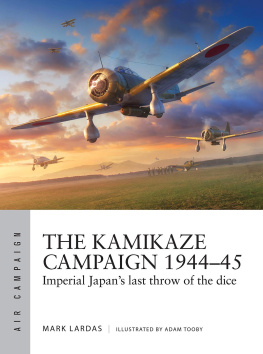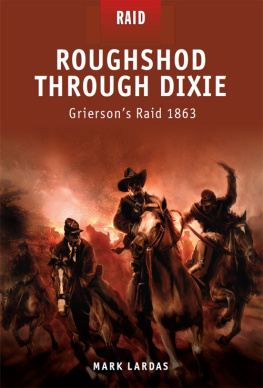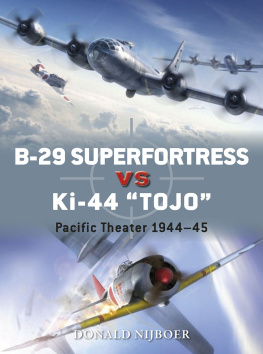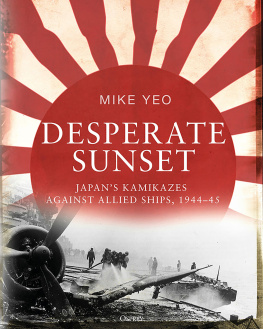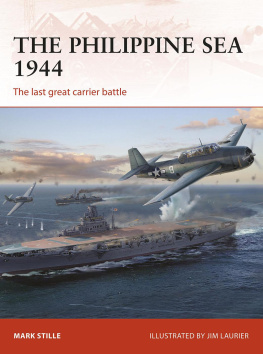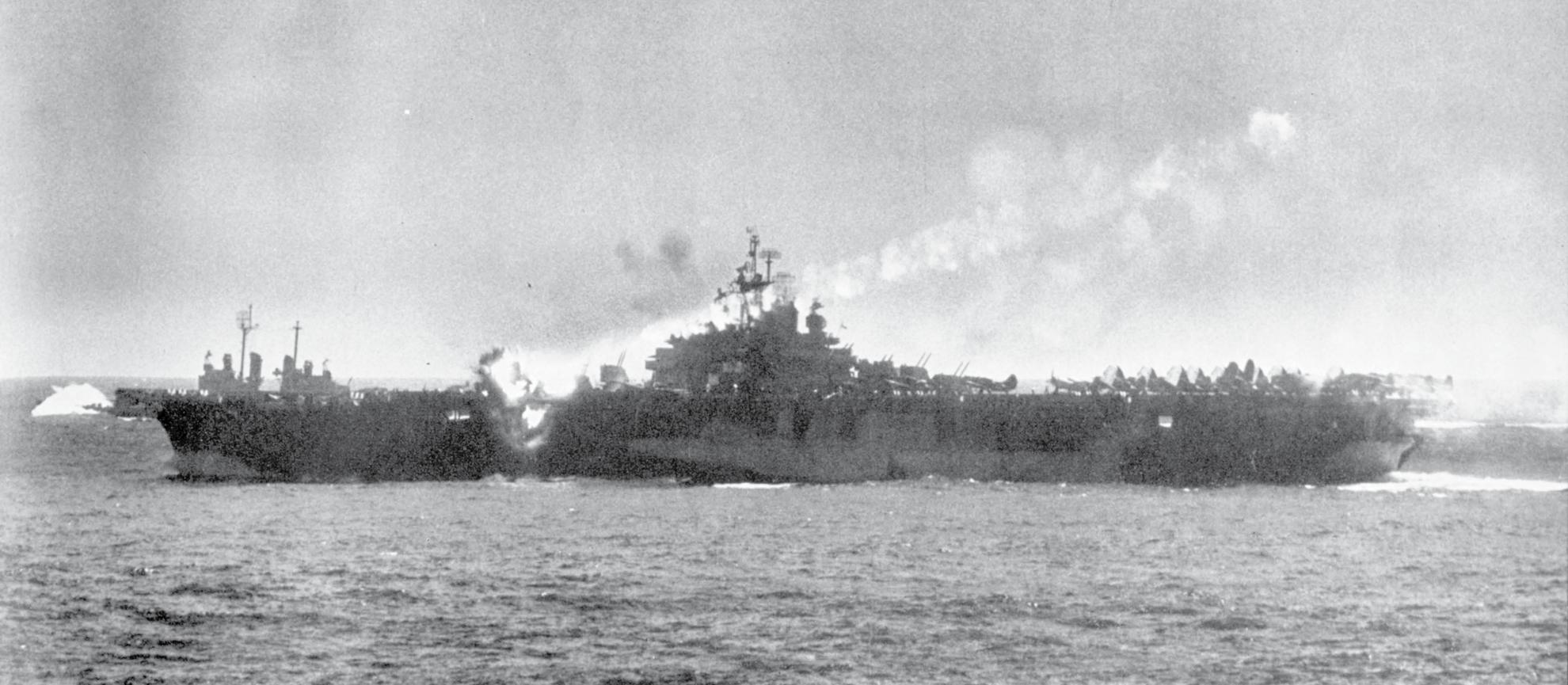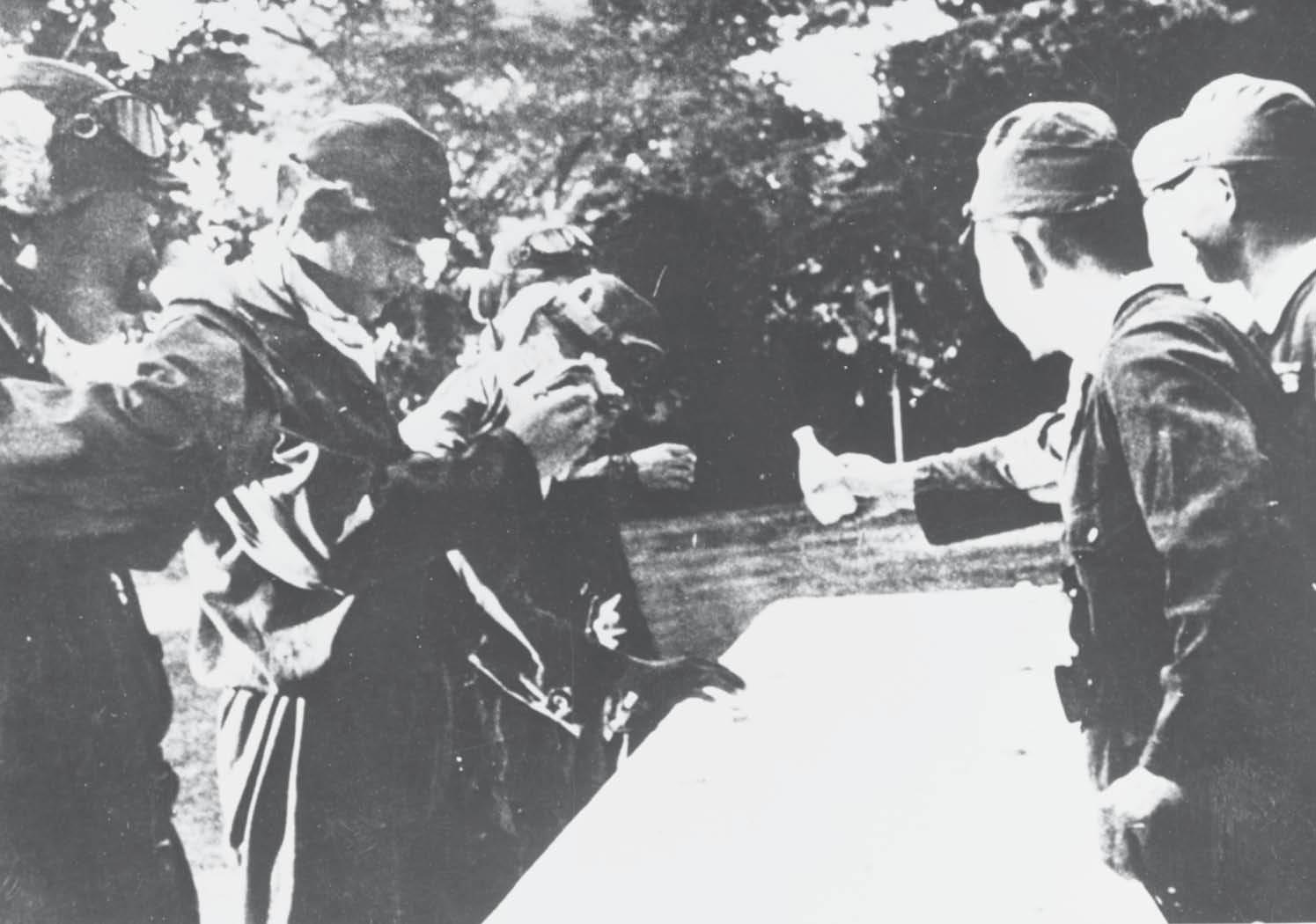Mark Lardas - The Kamikaze Campaign 1944–45: Imperial Japans last throw of the dice
Here you can read online Mark Lardas - The Kamikaze Campaign 1944–45: Imperial Japans last throw of the dice full text of the book (entire story) in english for free. Download pdf and epub, get meaning, cover and reviews about this ebook. year: 2022, publisher: Osprey Publishing, genre: History. Description of the work, (preface) as well as reviews are available. Best literature library LitArk.com created for fans of good reading and offers a wide selection of genres:
Romance novel
Science fiction
Adventure
Detective
Science
History
Home and family
Prose
Art
Politics
Computer
Non-fiction
Religion
Business
Children
Humor
Choose a favorite category and find really read worthwhile books. Enjoy immersion in the world of imagination, feel the emotions of the characters or learn something new for yourself, make an fascinating discovery.
- Book:The Kamikaze Campaign 1944–45: Imperial Japans last throw of the dice
- Author:
- Publisher:Osprey Publishing
- Genre:
- Year:2022
- Rating:3 / 5
- Favourites:Add to favourites
- Your mark:
The Kamikaze Campaign 1944–45: Imperial Japans last throw of the dice: summary, description and annotation
We offer to read an annotation, description, summary or preface (depends on what the author of the book "The Kamikaze Campaign 1944–45: Imperial Japans last throw of the dice" wrote himself). If you haven't found the necessary information about the book — write in the comments, we will try to find it.
An illustrated history of how Japan devised and launched a new kind of air campaign in late 1944 the suicidal assaults of the kamikaze units against the approaching Allied fleets.
As summer changed to autumn in 1944, Japan was losing the war. Still unwilling to surrender, Japans last hope was to try to wear down US resolve enough to reach a negotiated settlement. Extraordinary measures seemed necessary, and the most extraordinary was the formation of Special Attack Units known to the Allies as the kamikazes.
The concept of organized suicide squadrons was first raised on June 15, 1944. By August, formations were being trained. These formations were first used in the October 1944 US invasion of the Philippine Islands, where they offered some tactical success. The program was expanded into a major campaign over the rest of the Pacific War, seeing a crescendo during the struggle for Okinawa in April through May 1945.
This highly illustrated history examines not just the horrific missions themselves, but the decisions behind the kamikaze campaign, how it developed, and how it became a key part of Japanese strategy. Although the attacks started on an almost ad hoc basis, the kamikaze soon became a major Japanese policy. By the end of the war, Japan was manufacturing aircraft specifically for kamikaze missions, including a rocket-powered manned missile. A plan for a massive use of kamikazes to defend the Japanese Home Islands from invasion was developed, but never executed because of Japans surrender in August 1945.
Packed with diagrams, maps and 3D reconstructions of the attacks, this book also assesses the Allied mitigation techniques and strategies and the reasons and the degree to which they were successful.
Mark Lardas: author's other books
Who wrote The Kamikaze Campaign 1944–45: Imperial Japans last throw of the dice? Find out the surname, the name of the author of the book and a list of all author's works by series.

